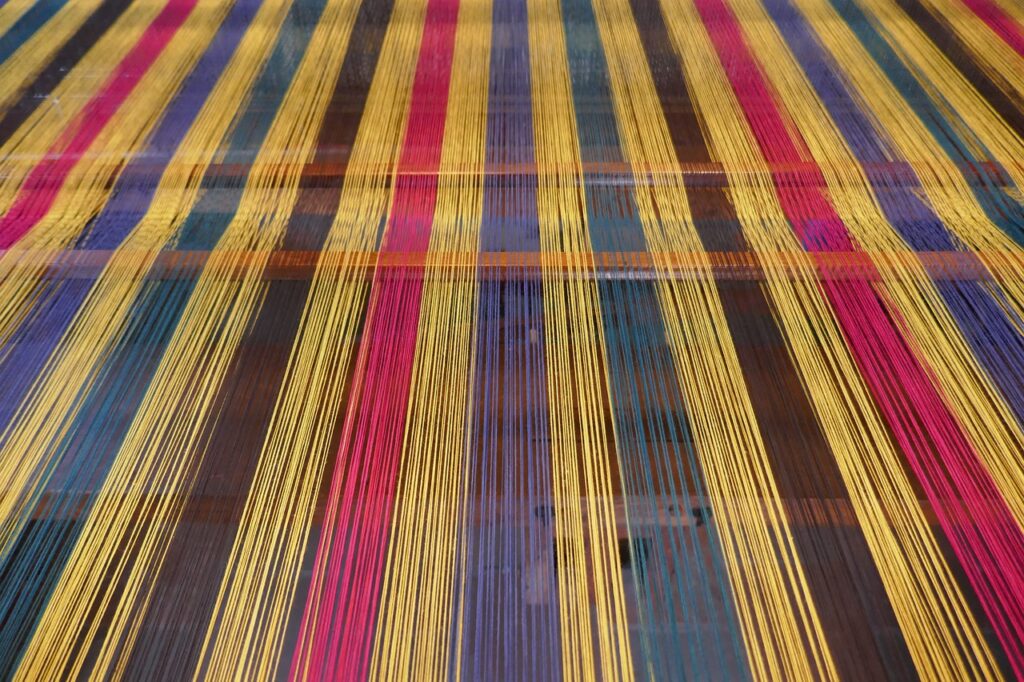Muslin cloth, a versatile fabric that has been utilized for centuries across various applications due to its unique properties is widely used in baby clothes, such as swaddling and burp cloths, for draping, embroidery, curtains, dressmaking, sewing, waxing, quilt backing, baby blankets and many more. Additionally, muslin fabric serves as an excellent choice for food preparation and theatrical backdrops, showcasing its functionality in both domestic and artistic settings. It also remains a popular choice across various applications in the textile industry. We are a leading manufacture of high-quality muslin cloth, offering a range of premium fabrics perfect for various applications. Our muslin is known for its softness, durability, and breathability, making it ideal for baby care, culinary uses, and crafting. We sell premium fabrics at an affordable range.


Muslin is traditionally made from specific cotton varieties, such as Phuti Karpas, known for their fine and short fibers. Our process of making muslin cloth is intricate and involves several specialized steps from picking raw cotton to giving it a final wash, often requiring skilled artisans.
- RAW PICKED COTTON – The process begins with selecting high-quality cotton, often from specific varieties known for their fine fibers. The
-
- process of picking raw cotton for making muslin cloth is a crucial step that significantly influences the quality and characteristics of the final fabric. The careful selection of these varieties is done by our artisans to ensure that only the best quality cotton is used, which is essential for producing the soft and lightweight texture characteristic of muslin. The fibers from selected cotton plants have unique properties that contribute to the fabric’s softness and breathability. Picking only the finest fibers allows us to achieve high thread counts, which are critical for creating delicate muslin that feels luxurious against the skin.
- CLEANING AND GINNING – The cleaning and ginning processes are vital steps in the production of muslin cloth, as they ensure the quality and purity of the cotton fibers used. This step involves removing seeds and impurities from the raw cotton fibers using mechanical gins. This sorting process is crucial for us as it allows us to separation the higher-grade fibers that we use for premium muslin from lower-grade fibers that may not meet our quality standard. After separation, the raw lint undergoes further cleaning to remove any remaining trash or debris. This ensures that only high-quality lint moves forward in the production process.
- SPINNING – The spinning process is a critical stage in the making of muslin cloth, as it transforms raw cotton fibers into yarn, which is essential for weaving the fabric. Spinning involves twisting together drawn-out strands of cotton fibers to form yarn. It allows for the assessment and improvement of fiber quality. During spinning, any weak or damaged fibers are removed, ensuring that only high-quality strands are twisted into yarn. This quality control is vital for producing soft and durable muslin. Special care is taken in this process because the degree of twist applied during spinning influences the strength and elasticity of the yarn.
WEAVING – This process is essential for creating the structural integrity of muslin, allowing it to be used in various applications such as clothing, home textiles, and medical uses. Weaving ensures that the fabric produced is consistent in texture and appearance. The loose weave structure of muslin allows for excellent airflow flow, making it a smart choice for warm climates. This breathability is one of the reasons why muslin is favored for summer clothing and swaddling blankets. The properties imparted during weaving make muslin a versatile fabric suitable for various uses, from fashion to culinary applications (like cheese-making) and beyond.


MERCERIZING – Our primary aim is to ensure the cleanliness and quality of the fabric. Rinsing helps remove any residual chemicals, such as detergents or bleaches, that may have been used during earlier washing or processing stages. This is crucial for ensuring that the final product is safe for use, especially in applications like baby clothing or medical textiles where skin sensitivity is a concern. During the initial washing stages, impurities such as dirt, oils, and other contaminants are removed. Rinsing ensures that these impurities are thoroughly washed away from the fibers, resulting in cleaner and higher-quality. Rinsing can help to soften the fibers further, enhancing the overall feel of the muslin. This is particularly important for muslin, which is valued for its soft texture and comfort against the skin. Proper rinsing contributes to achieving this desirable softness.
DYEING – Dyeing allows for a wide range of colors and patterns to be applied to muslin fabric, enhancing its visual appeal. This versatility makes muslin suitable for various applications, from fashion to home decor. Quality dyeing techniques used by us ensure that colors are absorbed well into the fibers, resulting in hues that are less likely to fade with washing or exposure to sunlight. This durability is important for maintaining the fabric’s appearance over time.

QUALITY CONTROL – The final wash contributes to the softness of muslin cloth. This step can help to fluff up the fibers, resulting in a softer and more pleasant texture that is characteristic of high-quality muslin. This softness is especially important for products intended for close contact with skin, such as baby swaddles and clothing. Any stiffness from previous processing stages can be mitigated through washing, making the fabric more pliable and comfortable to use.


